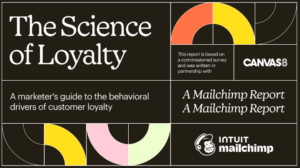by Maor Sadra, CEO, INCRMNTAL
It goes without saying that marketers want to know how successful each of their marketing efforts has been. Many marketers therefore rely on attribution platforms to tell them which channel, campaign, or ad group led to a desired KPI, so they can refocus their marketing to put more budget towards the tactics that are driving the most conversions. Sounds great in theory, the problem is, attribution can be wrong, even when it’s ‘right’.
Take a hypothetical consumer named Dave for example. Over the course of five days, Dave, a big footy fan, is served seven ads for his team’s latest kit, which has just hit the shops. These ads appear on Google, Facebook, Twitter, as well as being served by other ad exchanges across different sites he visits on his laptop and mobile. Three of these ads he clicks on and four he just views. On the sixth day, Dave decides to buy the kit, so which ad was responsible for convincing Dave to make the purchase? Google would tell you it was the last ad Dave clicked, while the other platforms or ad servers would each present their own logic about which point in the journey scored the winning goal. Four out of the seven ads claimed credit for Dave’s new kit, so which is right?
The truth is all and none. Based on the rationale of their own individual measurement tools, each player believes they are correct and will justify why they have assigned credit to a particular ad or ads. But as much as they would all like to be the one responsible for driving the conversion, the reason for Dave’s purchase could have been driven by any or all of them or by an entirely different event, such as the sixth day being payday or the weekend when he had more time to shop online.
So, is there any point in user level attribution and what can marketers do to gain a well-rounded view of what’s driving their marketing success?
Big players driving false representation in the industry
Google, Meta, Apple and the like, command a huge amount of control over the ad industry, because of the amount of raw data they hold on individual consumers. They use this data to determine the rules when it comes to the value of advertising, but they’re not all on the same page. While Google charges based on clicks, other players charge on impressions. And not only are they not all right, none of them are. As Dave and his new footy kit explained, no matter how much data you hold on a user, it still won’t determine why a customer took the action they did without an understanding of the wider factors that may have been at play.
The big players will of course all say the way they measure is correct, because their revenue depends on it. But assigning all the credit to one channel and dismissing the others, has left marketers making important decisions around optimisation and budget allocation based on fiction rather than fact. This needs to change. Brands must start to challenge their attribution measurement providers to understand exactly how they’re getting to the results they are. At the moment too many marketers are still blindly going along with the lies the big players spin to line their own pockets, and it’s down to all of us to drive a fairer ecosystem based on truth and transparency.
Is there any place for attribution?
Even as the cookie deadline approaches, attribution isn’t going anywhere. We are going to see more solutions aggregated to campaign level however, such as Apple’s SKADnetwork and eventually, Google’s Privacy Sandbox. The reason attribution is not dying out is that it does hold some value for marketers. It’s a good proxy for optimisation that requires user-level granularity. Where it has value for marketers is helping them to determine which creative or placement is working best in real-time, so marketers can adjust campaigns accordingly on the go.
Last touch attribution (LTA) is important, as marketers need to know which was the last ad a consumer interacted with before they converted, but they also need to understand that the final ad alone isn’t responsible for the conversion – despite what the big players might say. Every point on the consumer journey played some role, as did outside factors, which is why relying on LTA only leads to bad decisions and wasted spend. Sorry Google! Instead, brands need to work with a variety of measurement tools if they want to determine with optimum accuracy what is truly driving ROI.
Is accurate marketing measurement even possible?
Yes, but for most marketers clarity can only be obtained by using a combination of solutions. Importantly, brands need to opt for solutions that take external factors and seasonalities into account and are able to measure online and offline marketing efforts; all things attribution isn’t able to do. Incrementality is one such tool, but up until recently its inability to measure without stop and start experiments, caused brands’ a headache and potentially wasted budgets while they sat and waited for the results of said experiments to be concluded. In recent years, incrementality has undergone a transformation thanks to AI and machine learning capabilities and it’s now possible to find solutions that are able to tell you how well certain channels are performing on a daily basis without the need for experimentation.
Media Mix Modelling (MMM) is another useful measurement tool, which uses historical data and trends in performance to estimate the contribution of each channel’s performance. It’s extremely helpful for marketers when it comes to budget planning. And it’s only by using a combination of attribution, incrementality and MMM, that brands can gain the best understanding of their marketing efforts. Attribution should be utilised for real-time optimisation, incrementality measurement for understanding true impact, and MMM for long-term budget planning. By integrating these methodologies and leveraging advanced platforms and tools, marketers can navigate the complexities of data and measurement to make informed decisions and drive continuous growth.
If brands stop taking at face value the claims of the big players about their measurement solutions, and instead seek to integrate more than one measurement tool, it will make a huge difference to the success of their marketing budgets. As an industry, we need to see a decisive move away from sole reliance on Google, Meta et al, whose false representations are simply holding brands back and bolstering their own pockets at others’ expense.







